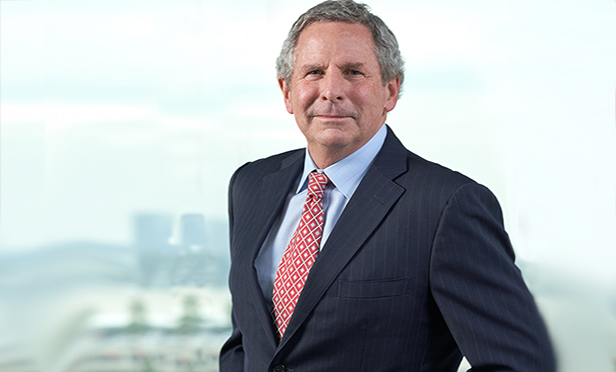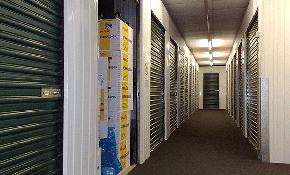 “Overall,” says Rick Chichester, “we’re not seeing doom-and-gloom in retail. We’re seeing change and change equals opportunity.”
“Overall,” says Rick Chichester, “we’re not seeing doom-and-gloom in retail. We’re seeing change and change equals opportunity.”
IRVINE, CA–Let’s start with the obvious: The economy and consumer confidence (read: spending) are joined at the hip. Doing a deeper dive beyond sweeping statements, the relationship between economic highs and lows and the retail picture is much more highly nuanced than that. Fold in such indirectly related issues as the political discourse inside the Beltway, the short- and long-term effects of last year’s tax revamp, trade embargos and 2018’s inverted yield curve (a nearly sure predictor of woes to come), and a picture that’s less balanced than “this equals that” emerges.
There’s a market bifurcation that underlies the good economic news, “a tale of two cities.” That’s how Rick Chichester, president and CEO of Faris Lee Investments, sees it, and he said so in a recent exclusive interview with GlobeSt.com:
GlobeSt.com: Despite the news of store closings, how do you see the retail sector buoyed by the national economy?
Rick Chichester: Going into Q1, we were expecting the start of a slowdown, and with good reason. There were issues that caused some substantial contraction in November and December: Trade tensions, the government shutdown, threats of continued rate increases by the Fed and a quarter-over-quarter slowing economy. Together, these caused everybody to pull back on their expectations for 2019. Instead, as it’s been reported, the economy has expanded between 2.5 and 2.9 percent for the first quarter as opposed to 2.2 in Q4. While political stress is still very much a part of the day-to-day issue that’s affecting the economy, much of those tensions have been resolved or at least set aside. But it all affects consumer psyche, directly and indirectly.
GlobeSt.com: Which would imply a boost in consumer activity, yes?
Chichester: There’s strong spending. That said, the accelerated growth of Q1 came mainly from inventories and trade, while consumer spending was moderate, but positive. The following quarters will be a better gage on the overall strength of the economy, but certainly the most recent numbers provide some confidence that the economy is stable and still expanding.
But the dilemma and the cause of so much of the economic debate is that while consumer confidence remains at historic highs, they’re also being cautious with their spending. The big question is why the stock market is doing well while the bond market is neutral to hesitant. And, the Fed and many economists have paused on interest rates, because they don’t see the long-term outlook of the market as being robust. So there’s a tale of two cities. On one hand, we have the stock market/equities, and on the other is the bond market, which sees economic challenges on the horizon.
Of course, we have to add in here that the Fed has only two real mandates: employment and inflation. Unemployment is at historic lows, and inflation still hasn’t hit the two-percent benchmark the Fed targets. So, for at least the near term, they certainly won’t raise rates, and there’s also little chance they will cut rates.
GlobeSt.com: Wouldn’t the new tax structure goose consumer spending?
Chichester: It did last year. The benefits have been realized and are now less impactful at least at the personal level. It’s not the whole picture, however. The tax breaks were primarily designed to level the corporate landscape, as the tax reform was intended in part to make business more competitive, globally.
The stock market is still being driven by professionals, institutions and companies. We’re in a really strong corporate-buyback mode. A lot of companies have significant amounts of idle cash, and other companies are taking advantage of the low cost of capital to boost share value. As such, if a company can’t find accretive business opportunities to invest into, stock repurchase becomes a strategic alternative in driving equity and stockholder value. And that’s what’s driving so much of the stock market.
GlobeSt.com: So where does street-level retail stand in this soup?
Chichester: Overall, retail is doing relatively well. Those that are doing well are doing very well. Those that are struggling or continue to resist adapting in order to remain relevant will continue to be challenged. I’ve seen estimates that there should be up to as many as 75,000 more store closings over the next few years before we reach stability But those numbers don’t take into consideration the expansion of growing formats and the success of the digitally native vertically integrated brands (DNVBs) such as; Warby Parker, Peloton, UNTUCKit, Sierra Trading Post, Casper, Bonobos to name just a few – it was just recently announced that over 1,000 DNVBs have already launched physical locations. Retail is always fluid, dynamic and changing
GlobeSt.com: Of course, closures today, when you study them, don’t mean what they used to. Today it’s really more a thinning of the heard, yes?
Chichester: Yes. Some retailers over-leveraged and took on too much debt and as such they couldn’t invest in growth, and for public companies, there has always been an extreme focus on growth, both top line and bottom line – more growth means more stores and more revenue.
On the other hand, there are major expansions and new retail concepts coming on, far different from concepts of even 10 years ago. They’re more native, local and Bohemian.
Even with all the closings, plus the 75,000 more that are expected, is there sky-high vacancy? No, because those closings provide opportunity for expanding retailers. The cost of construction has expanded so significantly that there’s a very strong shift on the part of most retailers to expand without considering new builds.
Underlying it all, physical stores aren’t going away. They’re changing, and the value of the underlying real estate is still very strong, even if it has to get repurposed and redeveloped.
Overall, we’re not seeing doom-and-gloom in retail. We’re seeing change, opportunity and value.

















 Copyright © 2024 ALM Global, LLC. All Rights Reserved.
Copyright © 2024 ALM Global, LLC. All Rights Reserved.